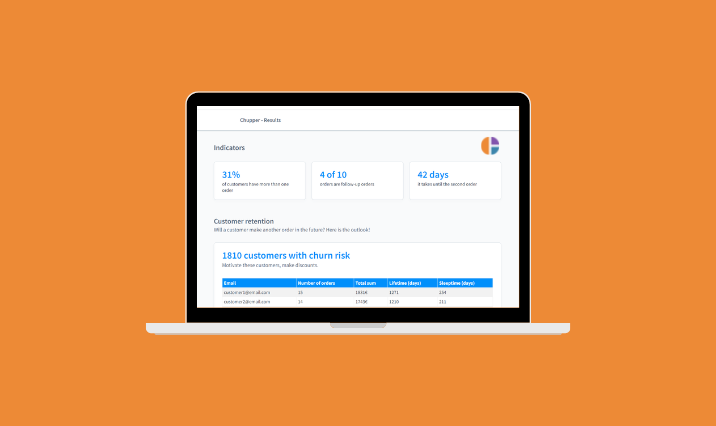5 Advantages of Low Code Development
Coding less, reusing more, working visually and finally focusing on the business - that's "low-code"! In this article we will talk about the main advantages of this approach.
The need for tools that minimize programming has been around for a long time. The goal of any organization is to solve the problem quickly and with minimal cost, taking into account the specifics of the business. The problem is that it is difficult to meet these criteria simultaneously. You can either use ready-made solutions that allow you to achieve results quickly, but without taking into account the nuances of the business and with the loss of flexibility. Or develop a unique solution yourself, which requires a lot of time and expensive specialists.
Low-code is a development method that allows you to design logic quickly with low implementation and maintenance costs. Low-code minimizes the use of programming code and replaces it with visual design tools. We have identified five main benefits of the low-code approach when working on analytical projects.
1. Speed
What does a company employee do when faced with a non-trivial analytical task? Correct - he turns to the IT department, because in most cases he does not have sufficient knowledge and skills to solve such a problem. Unfortunately, in 90% of cases, the work stops here, as development takes a lot of time and the IT department has to solve current "burning" problems.
With a low-code tool, an analytical problem can be solved much faster. At the same time, no special programming skills are required. John Rymer of Gartner wrote, "Low-code can speed software development by more than ten times the traditional approach." For analytical problems, roughly the same numerical sequence applies.
Here are some ways to explain this effect:
-
Visual design and drag-and-drop allow you to quickly use pre-built components with specific processing logic.
-
Easy-to-deploy APIs and connectors integrate with third-party interfaces and services, so you can quickly deploy and run integrations from multiple sources.
-
Processing logic is displayed in the form of a data stream that allows you to see the entire action flow on the workspace. In this case, it starts with one click. And in case of errors, they are immediately located and corrected.
2. Flexibility
Any IT solution requires constant evolution and adaptation: business processes change, new data sources emerge, and additional tasks arise. With high expectations and limited budgets, the low-code platform becomes a lifeline: companies can meet their needs without hiring new programmers.
In reality, low-code doesn't make developers obsolete. There will always be unique challenges that require programmer involvement. However, low-code helps bridge the gap between professional developers and the so-called "citizen data scientists," company employees who have not previously been involved in programming.
This can eliminate the difficulties of interaction between business users and developers within the company. There is no need for an analyst to describe to a programmer what needs to be implemented or to prepare a technical task.
In addition, it is important to remember that the vast majority of changes to data analysis logic involve constant minor adjustments, such as adding a new attribute, calculating another indicator, rebuilding the model, or changing the report form. All of this can be done by the analyst themselves, providing a flexibility that cannot be achieved with developers.
Using low-code methodology helps create a single team where the vast majority of tasks are performed independently by analysts, but programmers are brought in to implement the most complex logic when needed. Thus, the low-code system allows you to quickly test new management models, independently adapt to business requirements, quickly create new report forms, make changes to business processes, etc.
3. Availability
Experienced programmers are an expensive and limited resource. Requirements such as knowledge of a wide range of tools or programming languages severely limit the pool of suitable candidates. It takes longer to find the right specialist.
In the field of Data Science, this problem is even more acute, because developers not only need to master languages and a variety of tools, but also understand mathematics, statistics and machine learning. And even that is not enough, because it is necessary that this employee also understands the business being analyzed.
Because of this combination of requirements, the candidate pool for solving advanced analytics tasks is extremely narrow. It does not have to be fulfilled by the one who fulfills all the requirements, but by the one who found it on the market or in the company.
Low-code allows anyone to get involved with analytics, it is enough to know the basics of working with tables and attend a training course. In fact, it is available to anyone who can write a formula in Excel.
The lower the entry threshold, the more employees can use the tool. People who know Excel are ten times easier to find than those who know programming. Consequently, each company gets 5-6 times more specialists who can solve analytical problems. Moreover, there is no need to look for these employees on the market. They are already working for the company. It is enough for them to complete a weekly study.
4. Know-How Transfer
The maximum efficiency of any process is achieved when it is automated. Once created, the developments are reused in other projects and directions, which increases the efficiency of the company. Reusability of findings is fundamentally different from the typical situation where the analysis is done manually in Excel every time.
When solving analytical problems, knowledge accumulation is all about scenarios , prepared data and integrations. Analysts can easily package their knowledge into pre-built components, reuse them, share them with colleagues and reuse them for other tasks.
This approach allows you to accumulate knowledge, share experiences, make fewer mistakes and ultimately improve work efficiency.
5. Control of "Shadow IT"
Shadow IT are systems and applications deployed by users without the knowledge or consent of IT departments.
They occur because employees are not getting what they need from the IT department and management demands results. This results in business users being forced to solve problems themselves with available tools.
It seems fine because the task at hand will eventually be solved. But the fact is that such manual systems take into account a vast amount of important and even critical information for the company. For example, data from different sources is collected and deleted there, optimal prices are calculated, KPIs are calculated and so on.
Hundreds of Excel files appear in the company, where real calculations are performed. The logic of the work is known to one person in the company - the person who created it. The bottom line: no centralization, security, teamwork, testing or unification. Everything is tied to one employee, which is unacceptable in terms of risk. Moreover, a similar situation can be observed everywhere, even in large corporations.
Low-code allows you to bring hidden developments out of the shadows and provides the user with a convenient tool for independently solving operational tasks and the IT department - a centralized and secure environment for teamwork:
-
Working out the hypothesis by a single analyst (e.g. collecting and combining data, testing machine learning algorithms, etc.).
-
Provide access for colleagues to implemented scripts for review, testing, and sharing.
-
Implementing centrally in collaboration with the IT department while adhering to all necessary procedures.
By using an analytical low-code platform, the company gets the opportunity to take full advantage of the independent solution of operational tasks by the forces of business users, which are the reasons for the widespread emergence of "shadow IT", but with the preservation of the necessary level of control and security.
Companies that implement tools based on low-code ideology can involve significantly more employees in the data analysis process than companies that rely only on developers. Business users have a better understanding of the subject matter. They are able to understand the data and take into account the specifics of the business. This increases the speed and quality of decisions made at a lower cost.


